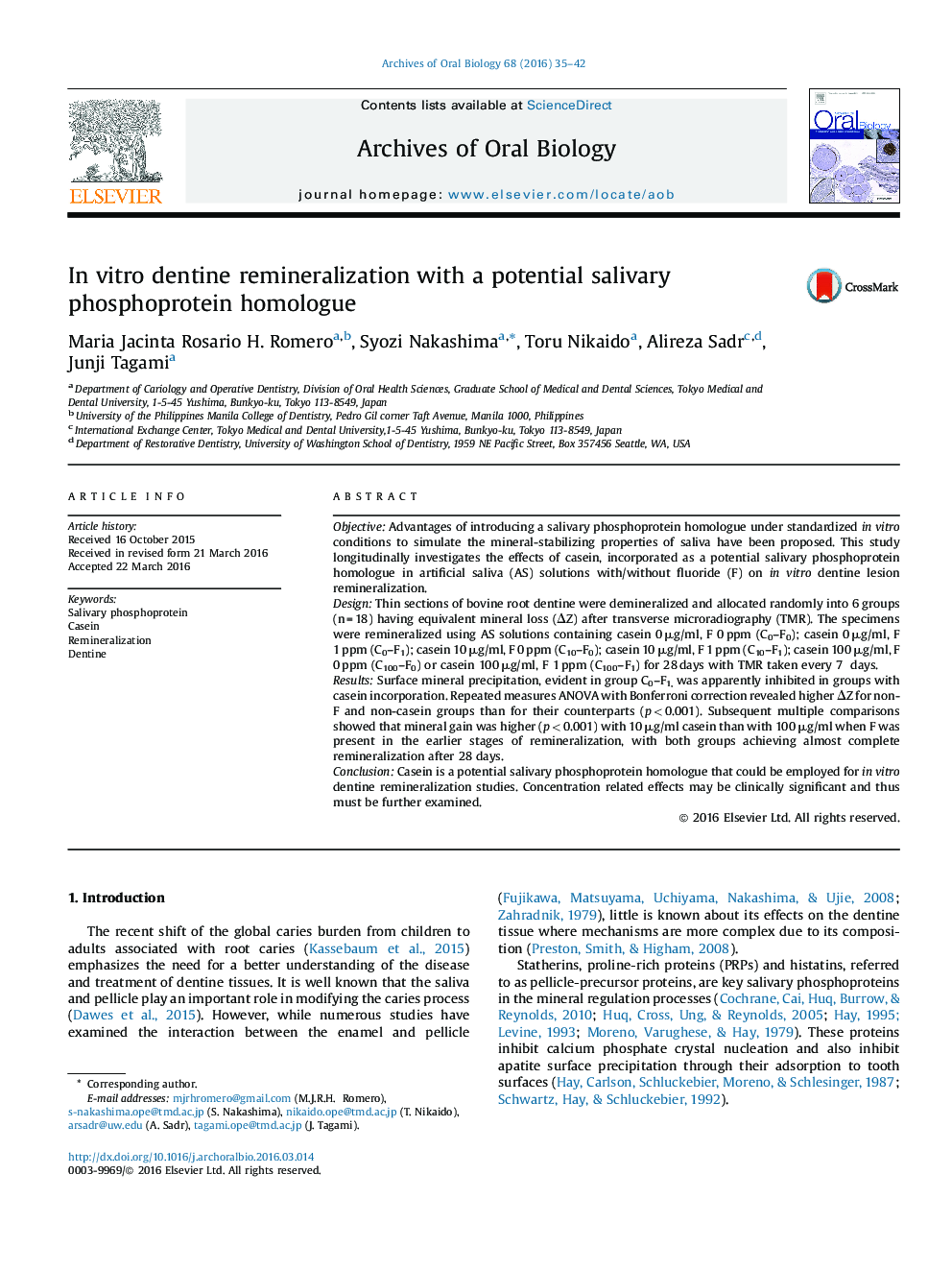| Article ID | Journal | Published Year | Pages | File Type |
|---|---|---|---|---|
| 3120630 | Archives of Oral Biology | 2016 | 8 Pages |
•Potential of casein as an in vitro salivary phosphoprotein homologue was tested.•Casein inhibited surface precipitation but allowed dentine lesion remineralization.•Lower casein concentrations resulted in greater mineral gain over time.•Casein can be a salivary protein homologue for dentine remineralization studies.
ObjectiveAdvantages of introducing a salivary phosphoprotein homologue under standardized in vitro conditions to simulate the mineral-stabilizing properties of saliva have been proposed. This study longitudinally investigates the effects of casein, incorporated as a potential salivary phosphoprotein homologue in artificial saliva (AS) solutions with/without fluoride (F) on in vitro dentine lesion remineralization.DesignThin sections of bovine root dentine were demineralized and allocated randomly into 6 groups (n = 18) having equivalent mineral loss (ΔZ) after transverse microradiography (TMR). The specimens were remineralized using AS solutions containing casein 0 μg/ml, F 0 ppm (C0–F0); casein 0 μg/ml, F 1 ppm (C0–F1); casein 10 μg/ml, F 0 ppm (C10–F0); casein 10 μg/ml, F 1 ppm (C10–F1); casein 100 μg/ml, F 0 ppm (C100–F0) or casein 100 μg/ml, F 1 ppm (C100–F1) for 28 days with TMR taken every 7 days.ResultsSurface mineral precipitation, evident in group C0–F1, was apparently inhibited in groups with casein incorporation. Repeated measures ANOVA with Bonferroni correction revealed higher ΔZ for non-F and non-casein groups than for their counterparts (p < 0.001). Subsequent multiple comparisons showed that mineral gain was higher (p < 0.001) with 10 μg/ml casein than with 100 μg/ml when F was present in the earlier stages of remineralization, with both groups achieving almost complete remineralization after 28 days.ConclusionCasein is a potential salivary phosphoprotein homologue that could be employed for in vitro dentine remineralization studies. Concentration related effects may be clinically significant and thus must be further examined.
